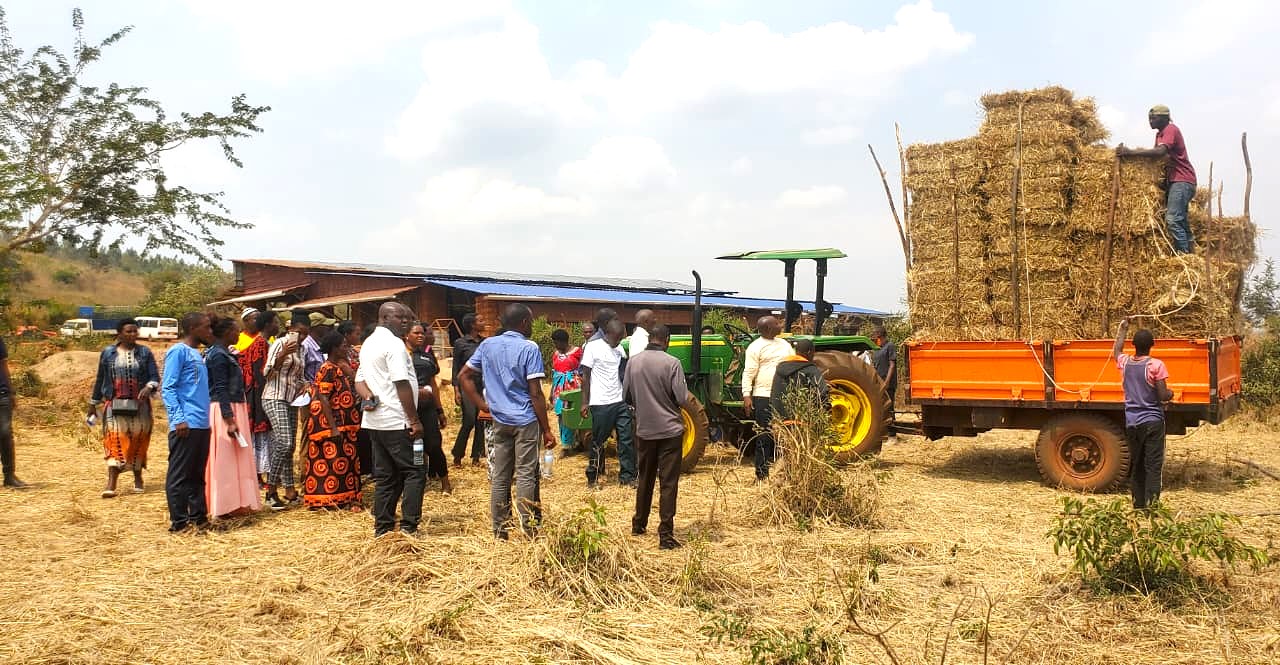These models not only respond to the growing demand for feed driven by recurrent droughts and farmers’ willingness to invest in animal survival but also unlock opportunities for value addition, packaging, and distribution. Properly processed and packaged fodder can be transported to feed-deficient zones, ensuring continuity of livestock production and safeguarding rural livelihoods.
Transforming Livelihoods through Climate-Smart Fodder Interventions: Emmanuel’s Story from Nyagatare
Before the launch of the TREPA project in Nyagatare District, Nkubito Emmanuel, a resident of Cyenjojo village in Rwempasha Sector, depended on low-quality grasses harvested from the Muvumba marshland to feed his cattle. With limited access to diverse fodder species and little knowledge of improved fodder production techniques, his milk yield stagnated at just 50 litres per day, resulting in low income and limited livelihood gains.
The TREPA project marked a turning point. Through its targeted interventions, Emmanuel gained access to high-quality, climate-resilient fodder species, including Chloris gayana, Brachiaria, and Desmodium. This shift not only enhanced the nutritional value of his livestock feed but also significantly boosted milk production and household revenue.
Nkubito Emmanuel, a beneficiary of the TREPA project, expressed his gratitude for the project’s strong support to local communities.
Through the TREPA project, like other farmers in the Eastern Province of Rwanda, Emmanuel, an enterprising farmer, received specialized training in fodder production and Climate-Resilient Agribusiness Value Chains. Equipped with high-yielding, drought-tolerant fodder species such as Brachiaria, Chloris gayana, and Desmodium, and guided by Good Agricultural Practices, Emmanuel successfully doubled his milk production.
He now champions the use of resilient fodder varieties and Good Agricultural Practices as the cornerstone of sustainable livestock systems in the Eastern Province. To mitigate dry-season feed shortages, Emmanuel plans to store dried fodder for his own herd and sell surplus to neighboring ranchers, transforming his farm into a local fodder hub.
Currently, his fodder is stored directly on the ground, exposing it to contamination and reducing its shelf life. Establishing a dedicated livestock feed storage facility on his farm is critical to improving fodder quality, minimizing losses, and enabling a year-round supply.
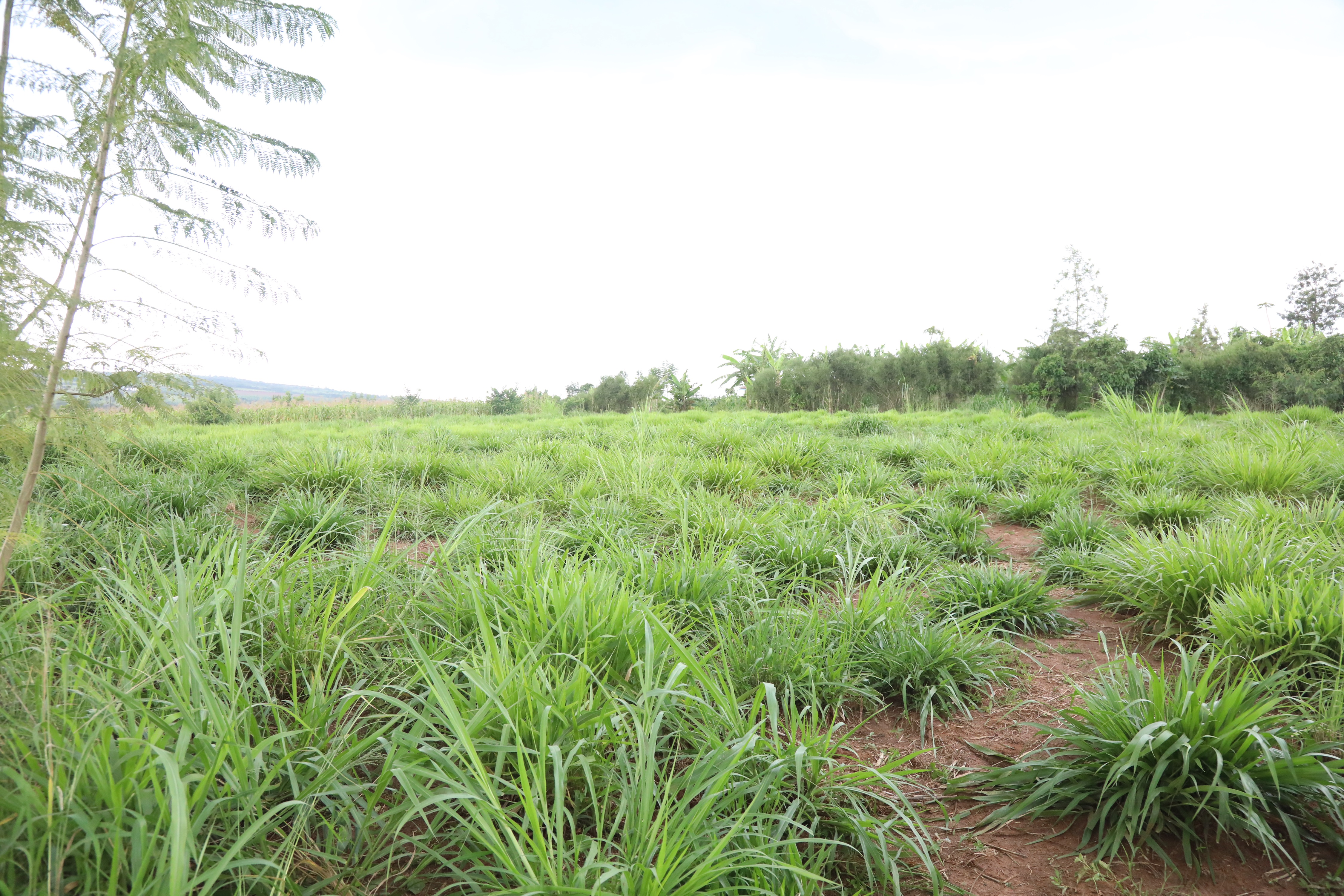
The story unfolding in Rwanda’s Eastern Province is more than a local success; it’s a blueprint for climate-smart development.
Emmanuel envisions a circular fodder enterprise; purchasing, processing, and storing fodder during periods of abundance, then selling it during times of scarcity. This model not only enhances climate resilience but also creates income-generating opportunities for rural communities, especially youth and smallholder farmers.
Before the implementation of the TREPA project, the waste was not well stored, leading to rotting and leachates. The poor storage diminished the efforts put forward on drought-tolerant fodder trees and grass, and led to increased production costs.
Through the TREPA project, the CIFOR-ICRAF team organized a workshop and knowledge building on climate-resilient agribusiness. Participants explored how cultivating climate-resilient forage species can transform livestock farming, reduce costs, and open new income streams. The participants emphasized that smart forage choices aren’t just good for animals, they’re good for the environment and the economy.
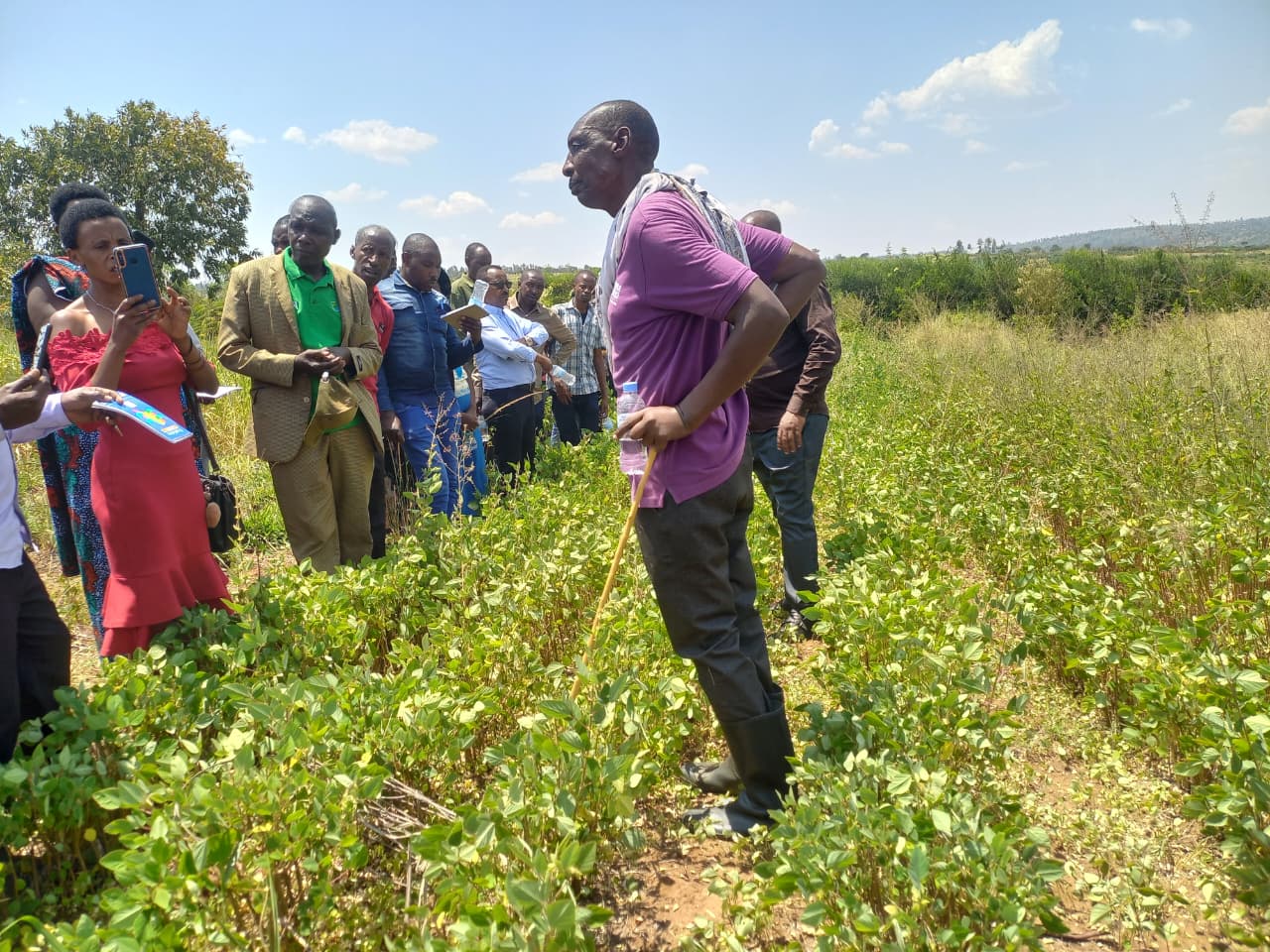
Peer-to-peer learning on fodder grasses and trees production for enhanced livelihoods and ecosystems.
The training emphasised the importance of hardy, high-nutrition species, including Brachiaria varieties like Basilisk and Piata, Chloris gayana, and leguminous plants such as Desmodium distortum. Farmers also learned about fodder trees like Calliandra calothyrsus and Leucaena diversifolia, which thrive in tough conditions and offer year-round feed. These species are not only resilient to climate shocks, they’re also packed with the nutrients livestock need to stay healthy and productive.
Beyond cultivation, the training highlighted the full spectrum of forage-related enterprises. Farmers discussed how to produce and sell fresh grass, hay, silage, and forage seeds, turning feed into a business. The economic benefits were clear: lower feeding costs, new revenue streams, and healthier grazing systems that protect the land. By cultivating drought-tolerant grasses and leguminous fodder species, farmers not only secure year-round livestock feed but also contribute to soil regeneration and biodiversity enhancement.
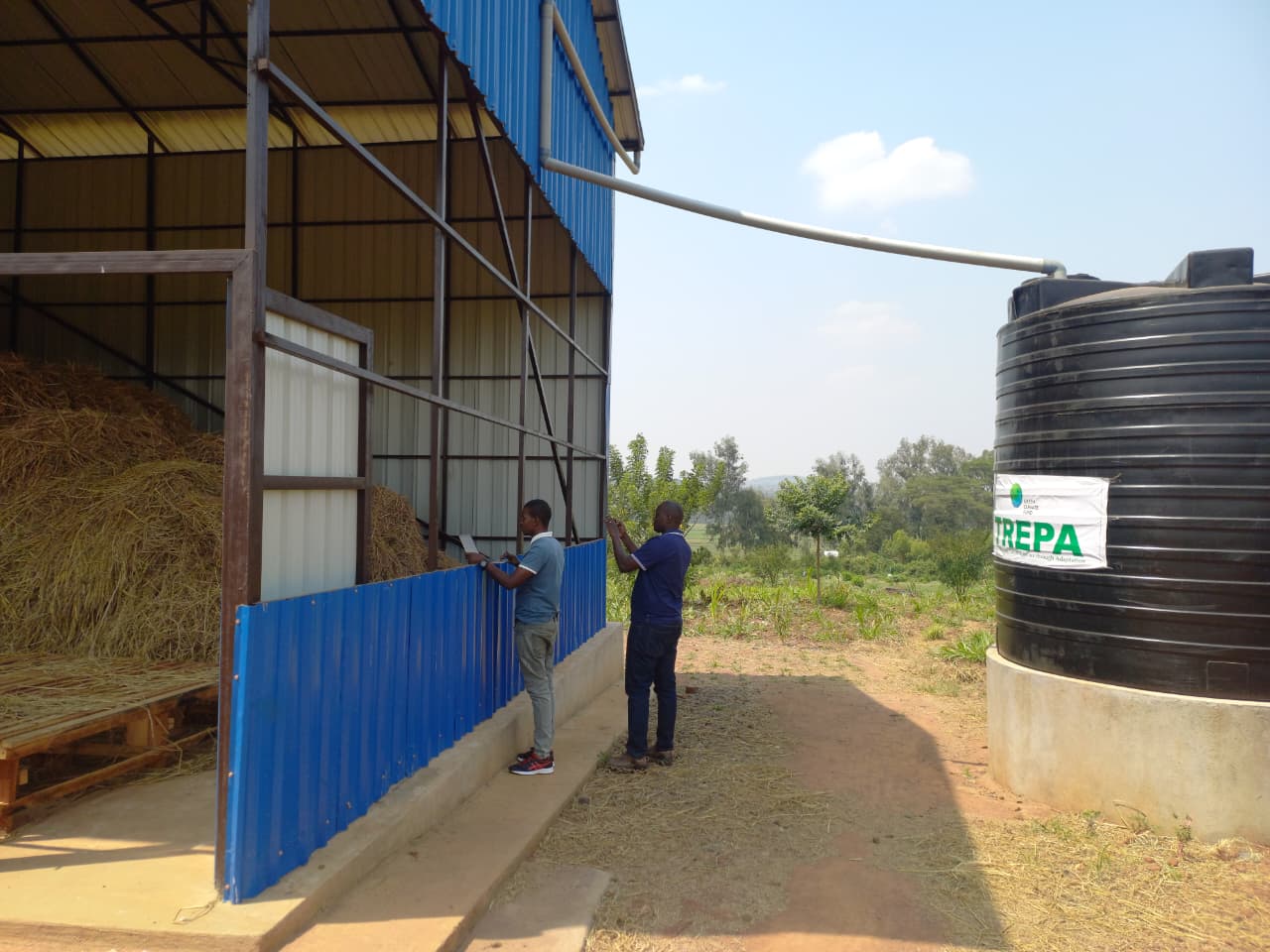
TREPA Boosted Feed Storage and Provided Water Harvesting Tanks for Farmers in Eastern Province.
One standout example is Nkubito Emmanuel, whose farm has become a regional learning hub. With nearly all his indigenous trees thriving, he’s showing others how to grow fodder trees, store livestock feed, and turn climate-smart practices into profit. “People come to see what’s possible,” he said. “And they leave with ideas.”
Also, Martin’s success with Chloris gayana hay is turning heads. From just one hectare, he produces thousands of bales, thanks to smart techniques and zero grazing. “I used to struggle to feed my cows,” he said. “Now I sell feed to others.”
The knowledge building involved peer-to-peer learning where fodder model farmers shared experiences of production and processing.
Lessons from the Ground: What Eastern Province Is Teaching Us
The story unfolding in Rwanda’s Eastern Province is more than a local success; it’s a blueprint for climate-smart development. As communities embrace fodder-based enterprises, three powerful lessons are emerging that policymakers and development partners can’t afford to ignore:
-
Local Feed Storage Empower Communities: When farmers have access to nearby fodder hubs, transaction costs reduce. Transport costs drop, feed becomes more reliable, and small businesses begin to flourish. These decentralized systems aren’t just efficient, they’re empowering.
-
Youth and Women Are Leading the Change: With the right training and startup support, fodder enterprises are becoming launchpads for young entrepreneurs and women-led agribusinesses. These nature-based value chains offer equity, dignity, income, and a sense of purpose, especially in dryland areas.
-
Resilience Pays Off:Farmers who grow drought-tolerant species and apply good agricultural practices are seeing tangible gains: higher yields, lower input costs, and diversified income streams. Many are now bulking, processing, and selling fodder during periods of scarcity, when prices peak, turning climate risk into market opportunity.
-
Restoration Meets Enterprise: Integrating fodder value chains into landscape restoration, communities are regenerating ecosystems, improving soil health, and sequestering carbon, all while building inclusive, climate-resilient agribusinesses that centre youth and women.
Conclusion:
The TREPA project experience in Rwanda’s Eastern Province shows that climate-smart fodder enterprises are more than agricultural interventions; they’re vehicles for restoring degraded landscapes, creating dignified livelihoods, and building resilient communities. As farmers like Emmanuel and Martin turn knowledge into action, their success stories illuminate a scalable path forward: one where youth and women lead inclusive agribusinesses, ecosystems regenerate through smart forage choices, and carbon is quietly sequestered beneath thriving pastures. This is not just restoration, it’s transformation rooted in local leadership, innovation, and hope.
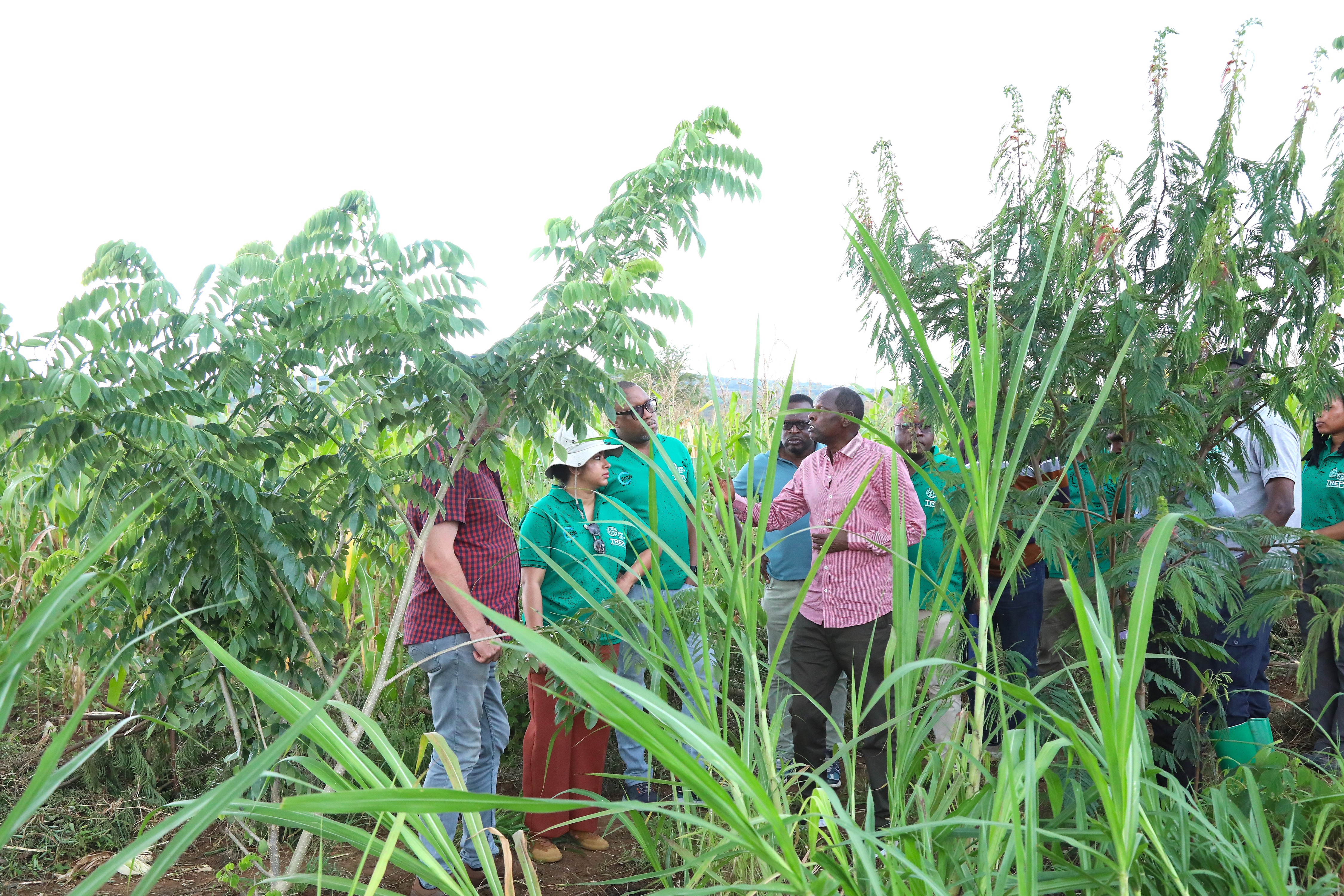
The TREPA team visited several sites where success stories were documented.
